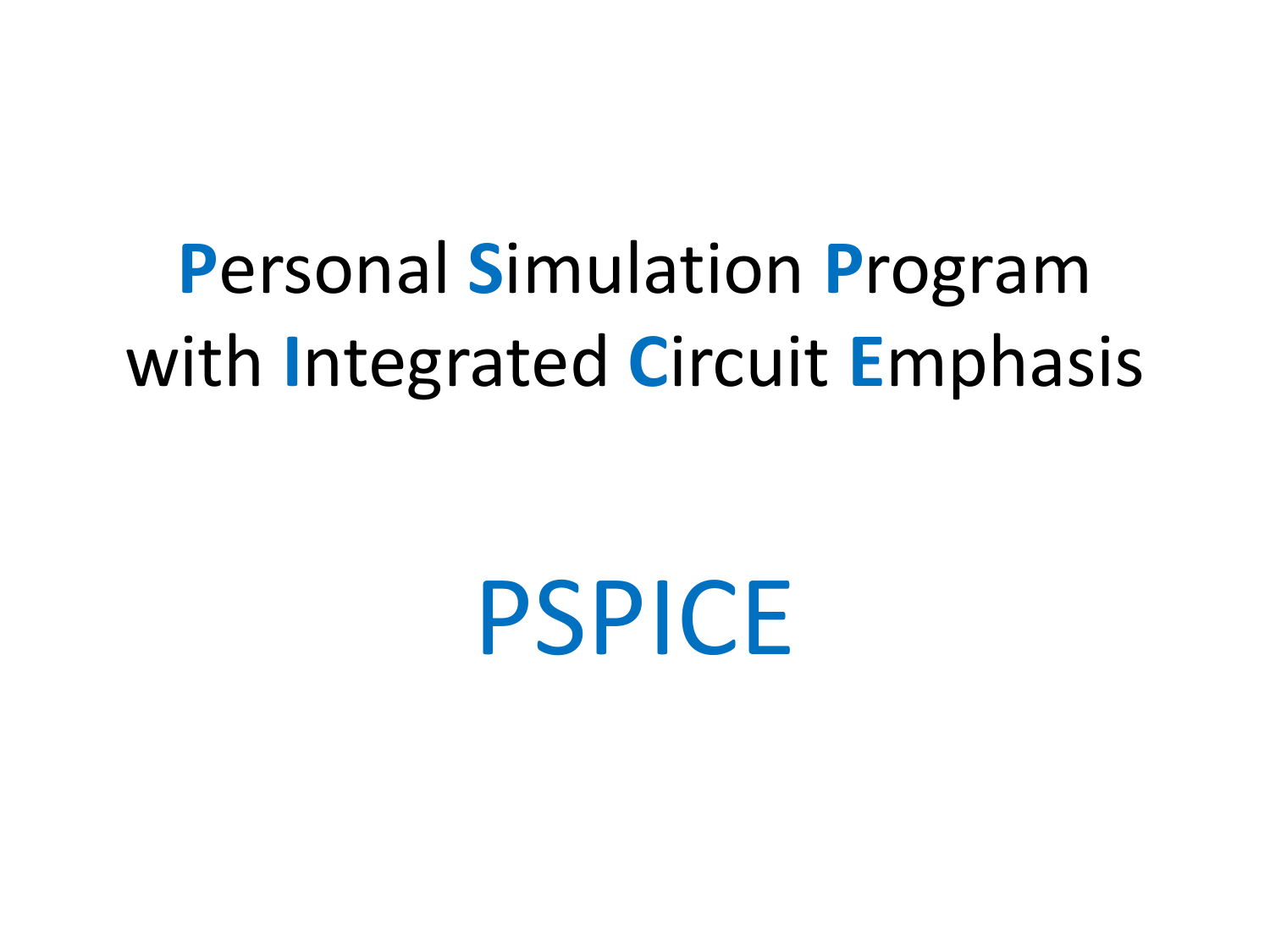Simulation Program With Integrated Circuit Emphasis
Written By LuisPSPICE is an useful simulation program and analog circuit software which can be run from home or personal computers. The acronym PSPICE stands for Personal Simulation Program with an Integrated Circuit Emphasis.The software presents a version specially developed for students, providing them with one of the most used environments for electronic circuits design and analysis.
Forgot roboform master password v8. In simple words we can say that the program allows students to create their own circuits, either digital or analogical. The best of all is that once you've finished your project, it allows you to analyze the circuits in a powerful virtual laboratory and simulate the performance as well.
Thanks to the advanced simulation technology, students will save time and obtain reliable designs of large sizes.To conclude we can say that PSPICE is a great program for designing, analyzing and simulating all kinds of electronic circuits.
Bipolar transistors simultaneously use holes and electrons to conduct, hence their name (from “two polarities”). Like FETs, bipolar transistors contain p- and n-type materials configured in input, middle, and output regions. In bipolar transistors, however, these regions are referred to as the emitter, the base, and the collector. Instead of relying, as FETs do, on a secondary voltage source to change the polarity beneath the gate (the field effect), bipolar transistors use a secondary voltage source to provide enough energy for electrons to punch through the reverse-biased base-collector junction.
As the electrons are energized, they jump into the collector and complete the. Note that even with highly energetic electrons, the middle section of p-type material must be extremely thin for the electrons to pass through both junctions. DesignAs mentioned earlier, an circuit takes an infinitely variable real-world voltage or current and modifies it in some useful way.

The signal might be amplified, compared with another signal, mixed with other signals, separated from other signals, examined for value, or otherwise manipulated. For the design of this type of circuit, the choice of every individual component, size, placement, and connection is crucial. Unique decisions abound—for instance, whether one connection should be slightly wider than another connection, whether one should be oriented parallel or perpendicular to another, or whether one can lie over the top of another. Every small detail affects the final performance of the end product.When circuits were much simpler, component values could be calculated by hand. For instance, a specific amplification value (gain) of an could typically be calculated from the ratio of two specific resistors. The current in the circuit could then be determined, using the resistor value required for the amplifier gain and the supply voltage used. As designs became more complex, laboratory measurements were used to characterize the devices.
Engineers drew graphs of device characteristics across several variables and then referred to those graphs as they needed information for their calculations. As scientists improved their characterization of the intricate of each device, they developed complex equations that took into account subtle effects that were not apparent from coarse laboratory measurements. For example, a transistor works very differently at different frequencies, sizes, orientations, and placements. In particular, scientists found parasitic components (unwanted effects, usually resistance and ) that are in the way the devices are built. Parasitics become more problematic as the circuitry becomes more sophisticated and smaller and as it runs at higher frequencies. Although parasitic components in a circuit can now be accounted for by sophisticated equations, such calculations are very time-consuming to do by hand. For this work computers have become indispensable.
In particular, a public-domain circuit-analysis program developed at the, Berkeley, during the 1970s, SPICE (Simulation Program with Integrated Circuit Emphasis), and various models designed for use with it are in courses and in industry for analog circuit design. SPICE has equations for, and other components, as well as for lengths of wires and for turns in wires, and it can reduce the calculation of circuit interactions to hours from the months formerly required for hand calculations.Since digital circuits involve millions of times as many components as analog circuits, much of the design work is done by copying and reusing the same circuit functions, especially by using digital design software that contains libraries of prestructured circuit components. The components available in such a library are of similar height, contain contact points in predefined locations, and have other rigid conformities so that they fit together regardless of how the configures a layout. While SPICE is perfectly adequate for analyzing analog circuits, with equations that describe individual components, the complexity of digital circuits requires a less-detailed approach.
Best Free Spice Simulator
Therefore, digital analysis software ignores individual components for mathematical models of entire preconfigured circuit blocks (or logic functions).Whether analog or digital circuitry is used depends on the function of a circuit. The design and layout of analog circuits are more demanding of teamwork, time, and experience, particularly as circuit frequencies get higher, though skilled digital designers and layout engineers can be of great benefit in overseeing an automated process as well. Digital design emphasizes different skills from analog design. Mixed-signal designFor designs that contain both analog and digital circuitry (mixed-signal chips), standard analog and digital simulators are not sufficient. Instead, special behavioral simulators are used, employing the same simplifying idea behind digital simulators to model entire circuits rather than individual transistors.
Simulation Program With Integrated Circuit Emphasis Download

Behavioral simulators are designed primarily to speed up simulations of the analog side of a mixed-signal.The difficulty with behavioral simulation is making sure that the model of the analog circuit function is accurate. Since each analog circuit is unique, it seems as though one must design the system twice—once to design the circuitry and once to design the model for the simulator.